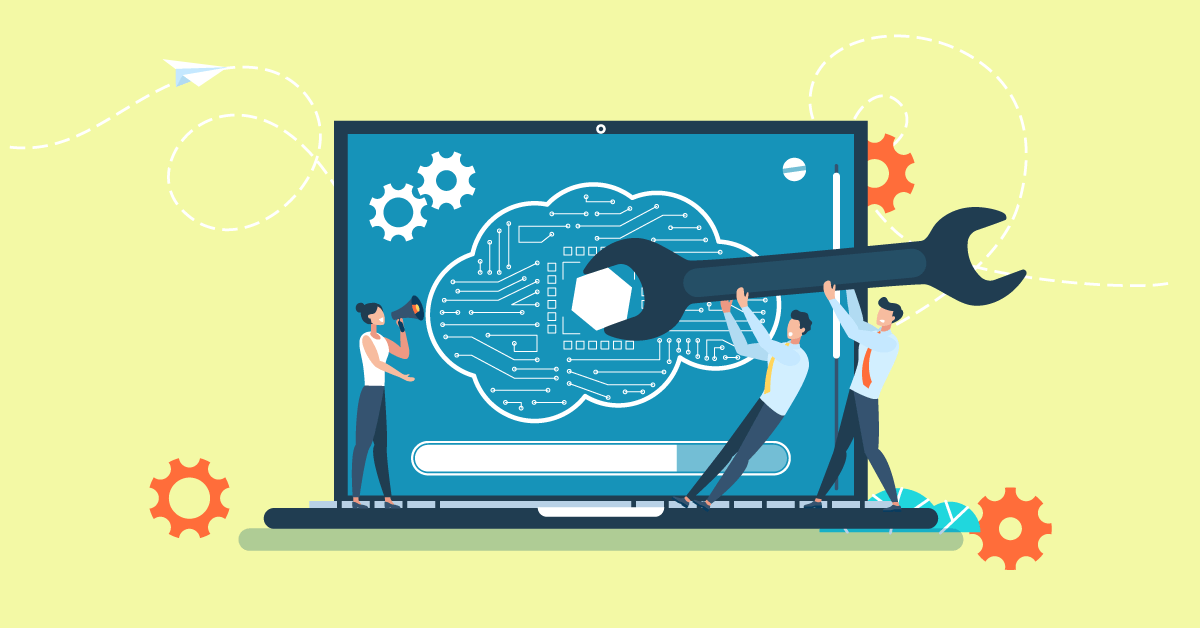This makes human resources a difficult job that’s faced by many challenges. It also means that identifying and overcoming human resource challenges is time, money and effort well spent, since the greatest asset a business can boast are its employees.
But what are the top human resources challenges in the workplace? Well, having tons of experience working with HR, we’ve managed to narrow down the list to the seven most common challenges faced by HR professionals, along with practical solutions.
1. Attracting top talent
Attracting and retaining the best talent takes discernment, time, and a whole lot of work. That’s why this human resource challenge features so high up on the list.
Attracting and retaining the best talent takes discernment, time, and a whole lot of work.Share on
To attract the right individuals, you need to know the requirements of the job and the organization. But as job roles and expectations keep changing, and organizational culture keeps adapting, this task becomes increasingly difficult.
So, we suggest that you start with how and where you market vacancies. Use the platforms that are most likely to be frequented by your target talent, depending on their skills, industry, and job level. Attracting the right candidates means you’ve got less work to do in the screening phase.
Then, when you do start screening your candidates, focus more on their fit with the organization, than with the job. Look for evidence that they enjoy learning, that they’re up for a challenge, and that they’re comfortable with change. Find out how technologically savvy they are, and how they deal with feedback.
By looking out for these qualities, you’ll be creating a team of employees who are likely to achieve the business’ training and development objectives, even as these transform over time (which is more important than knowing that they can perform the job well today).
2. Embracing change with grace and ease
Change is a shapeshifter, influencing our environment, competitors, customers, and workplace. But whether managerial, structural, procedural or technological, it’s well-known that humans are afraid of change. The unknown brings about feelings of uncertainty and anxiety.
This makes the large responsibility of adapting employees for change, one of the most recurring challenges faced by HR professionals. Human resources are tasked not only with managing employee morale, happiness, and cooperation through change but also with constantly upskilling employees to meet the changing needs of the business.
The solution? There’s no single right answer. But an effort to communicate frequently and transparently before, during, and after times of change is a good place to start. Provide fair warning of changes to come, and equip staff with the competencies they’ll need to deal with change.
By providing training on the hard and soft skills they’ll need to cope with the change, employees will feel more secure and capable, and be more likely to embrace change.
3. Developing the leaders of tomorrow
Not all teams perform at the same level, and this is usually because of the team leader. Many employees consider leaving their jobs because of a poor relationship with their direct manager. That’s why it’s critical to source and develop talented and inspiring leaders.
But this is easier said than done. Because grooming current employees for leadership positions doesn’t work when the leaders-in-the-making keep leaving – which is a regular occurrence in a Millennial-heavy workforce. That’s why this is one of the most common human resource challenges today.
Of course, you could handcuff your future leaders to their desks (we’re joking, you can’t do that), or, you could find ways to motivate them to stay.
Like providing regular training that aligns with a clear career progression path. This shows talented employees that you value them, see their potential for leadership growth, and are actively investing in that growth.
4. Fostering a culture of continuous learning
Today, crowds of employees leave their jobs with the key reason being a lack of development opportunities. Yes, training is the golden drawcard for keeping employees stimulated, engaged and loyal.
But this is only true when training is relevant to their jobs, includes engaging content and is available in formats that enable flexible learning. Training must happen continuously in order for the business to remain competitive, so employees can often become bored or overloaded.
Of all the human resource challenges, this one is arguably the most simple to address. Because Learning Management Systems enable us to train with eLearning courses. Online training can take place at home, on the weekends, or even on a mobile phone while waiting for a taxi. And it gets better.
Some LMSs, like eFront, offer advanced gamification and microlearning features, so that employees remain engaged in their training, and enjoy the flexibility of consuming bite-sized chunks of learning at times that are most convenient to them.
5. Managing diversity with local in mind
Globalization. It’s affecting every business, in every part of the world. Our customer reach is expanding beyond the traditional Head Offices, and talent can be sources across seas and borders. This means more sales, and a diversity of employee experiences, ideas, and perspectives.
However, with this diversity comes with a few human resource challenges, like managing diverse cultures in a local team. While adhering to local policies and procedures, HR must also create a workplace that is comfortable, welcoming, and free of conflict – for everyone.
Cultural awareness programs can help employees recognize the benefits of diversity, like better ideas and innovations, and a wider customer reach. Team building activities are also an effective approach for integrating employees of different cultures and uniting them towards a common business objective.
6. Looking After Health and Safety
Health and safety standards are probably one of the more obvious human resource challenges. Not only does labor law govern these concerns, but they’re also of great importance to general employee wellbeing. Because health in the workplace isn’t just about hygiene and safety.
Today, the psychological well-being of employees can deteriorate due to high demands, limited time, and general employee burnout. Sure, periods of stress are normal, and under times of pressure, employees can often produce their best work. But high levels of stress cannot be sustained.
This means that HR professionals need to keep a close eye on escalating workloads and stress levels. An open-door policy to discuss anxiety, working hours and unfair expectations is critical.
Training managers in Emotional Intelligence (EQ) can help them recognize the benefits of a healthy mental state. Other training, in mindfulness and general stress coping techniques, can help build a resilient workforce. And then, there are those progressive companies that allow mental sick leave when employees are feeling burnt out.
7. Creating a Quality Employee Experience
It’s not uncommon to find high staff turnover in fast-paced companies. Because even though they might manage to hire the best employees, keeping them around becomes the next obstacle and one of the greatest human resource challenges.
But if your employees are satisfied with their job, their workplace and the people they work with, then they’re far less likely to consider other employers. We’re talking about the modern concept of employee experience.
So, focus on creating an employee experience that’s a notch above the competition. You can do this by offering engaging online training, gym facilities, flexi-time, work-from-home arrangements or other incentives. Build a culture that is inspiring and welcoming, and encourage your leaders and managers to lead by example.
Face Your Challenges
The ultimate challenge for HR professionals is understanding the corporate landscape of the future. As industries and technologies evolve, new generations enter the workforce, and globalization creates increased competition, it will be the human resource issues that make or break a company.
By remaining relevant, and continuously identifying and addressing human resource challenges, companies will empower their greatest asset, their people, towards sustainable success.



